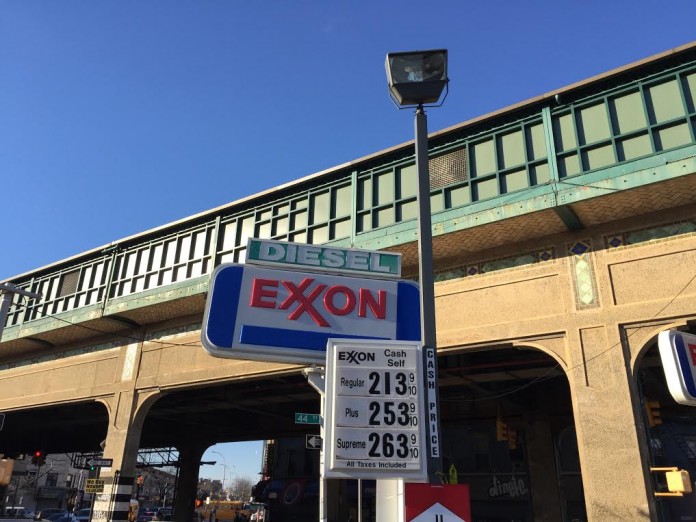
With the exception of credit-card use and self-fueling stations, the process of buying gasoline has changed little since the days of Henry Ford. So with gas prices rising again, seasoned technology innovators see an opportunity to change how people pay at the pump.
Even those who represent gas stations say the sector is ripe for innovation.
“People will drive out of their way to save money on gas, even if they have to spend extra money on gas to get there,” said Jeff Lenard, vice president of strategic initiatives at the National Association of Convenience Stores, a trade association for gas stations. “It’s a great feeling among consumers to take control of something they previously didn’t have control of.”
One team hoping to reinvent the market is Upside, a new 13-person company operating out of a co-working space in Washington, D.C.
Founders Alex Kinnier and Wayne Lin once worked at Google before heading east to help build Opower, the Arlington, Virginia-based home energy analytics firm.
Opower became a D.C. success story when it sold to Oracle for $532 million earlier this year.
Upside is getting money and advice from some of Silicon Valley’s most exclusive corners. It received an undisclosed amount of seed capital from Formation 8, a venture firm founded by former Facebook chief technology officer Gideon Yu. It is also getting counsel and funding from Hal Varian, a widely published academic who is Google’s chief economist.
The company’s secret sauce: exploiting a quirk in how gas stations compete for customers.
Upside negotiates discounts on the price of gasoline sold at individual stations and posts them on a map accessible from a smartphone app. Users claim their savings by taking a picture of their receipt, much like the mobile check-deposit services many banks now use.
Other apps, such as GasBuddy, have done this sort of thing for years. Where Upside stands out is on the supply side of the retail equation.
Individual gas stations tend to compete for prices on a corner-by-corner, highway-exit-by-highway-exit basis. Prices can be widely variant from one side of town to the other, but stations that cluster near one another in areas of heavy traffic often compete closely on pricing.
If a gas station on a crowded block cuts its price by even one cent, the others tend to quickly follow suit, not wanting to lose any incremental customers.
Upside exploits that competition by offering its services to just one station in each cluster (whichever reaches out to Upside first), shutting the others out so that competitors have no idea what the “true price” of gas is at that station.
Upside further obscures what the price is by offering a different discount to each user. This reduces the possibility of a price war breaking out; rival stations would have a difficult time figuring out how much they are being undercut.
The D.C. area’s fuel market has less competition than, say, an exit on an interstate highway, as stations tend to be less tightly packed. But that has not stopped 650 gas stations in the District, Maryland and Virginia from signing up. Kinnier says Upside is already turning down station owners whose neighbors beat them to the punch.
The company makes money by keeping for itself a small portion of what consumers save when they use the app, an undisclosed cut that represents “a few percentage points” of the customer’s total savings.
The service is too new to know whether it will be a success. It is only beginning to draw a following. As of Friday, the app had about 5,000 downloads in the Google Play Store and had an average user rating of 4.2 stars out of 5. The company says it has “tens of thousands” of users in total.
The company’s founders persuaded a contact at Uber’s D.C. office to send an email blast to its D.C.-area drivers, as part of an unpaid “partnership” that has given the app some devoted users among Uber drivers.
With the help of Hal Varian’s economic mind, the company wants to adapt the idea to other markets. The company is laser-focused on the fuel market for now, Kinnier says, but might try to expand to grocery stores later.
The common thread will be using mobile technology to exploit micro-level competition among individual retailers, saving consumers money and taking a cut of the savings.
The company plans to stick to markets for “necessities”; costs people have to incur on a regular basis to live. That would differentiate Upside from the “daily deals” market cornered by Groupon, which has seen consolidation in recent years after initially high hopes.
“It’s about helping people do better with the basic necessities in their life,” Kinnier said.
(c) 2016, The Washington Post · Aaron Gregg
{Matzav.com}












Wow, great. Does this work on Boro Park & Flatbush?